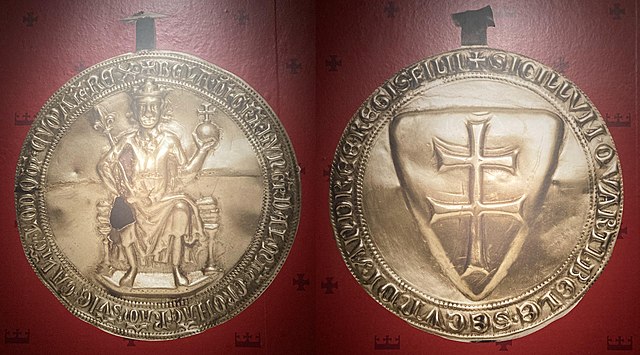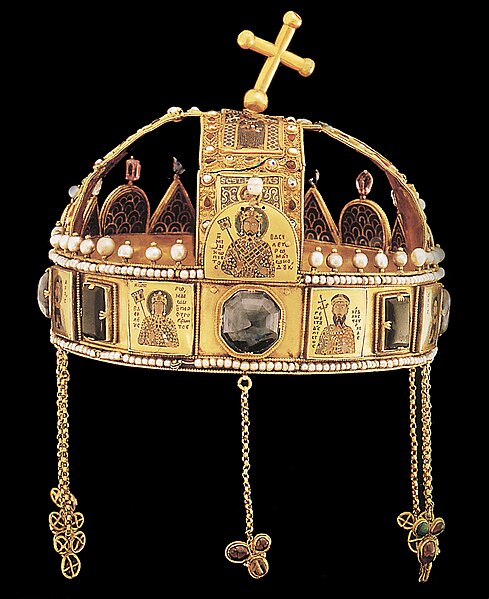The coat of arms of Hungary was adopted on 3 July 1990, after the end of communist rule. The arms have been used before, both with and without the Holy Crown of Hungary, sometimes as part of a larger, more complex coat of arms, and its elements date back to the Middle Ages.
The seal of King Béla IV from his Golden Bull
Reverse of the first double seal (1235–1241) of King Béla IV (1235–1270)
Reverse of the second double seal (1366–1382) of King Louis I the Great (1342–1382). The modern design of the coat of arms of Slovakia by Ladislav Čisárik was based on this medieval Hungarian seal.
Coat of arms of King Louis I the Great (1364). Wall relief on the courtyard of Bojnice Castle.
The Holy Crown of Hungary, also known as the Crown of Saint Stephen, named in honour of Saint Stephen I of Hungary, was the coronation crown used by the Kingdom of Hungary for most of its existence; kings were crowned with it since the twelfth century. The Crown symbolized the King's authority over the Lands of the Hungarian Crown, and it was a key mark of legitimacy. Through the history of Hungary, more than fifty kings were crowned with it, with the last being Charles IV in 1916. The only kings not so crowned were Wladyslaw I, John Sigismund Zápolya, and Joseph II.
Front of the Holy Crown
Back of the Holy Crown
The oldest authentic representation of the Holy Crown from 1555. The crown depicted in the Fugger Chronicle. All images of the crown before the mid-17th century show the cross in its original upright position.
The Holy Crown of Hungary, 1857








